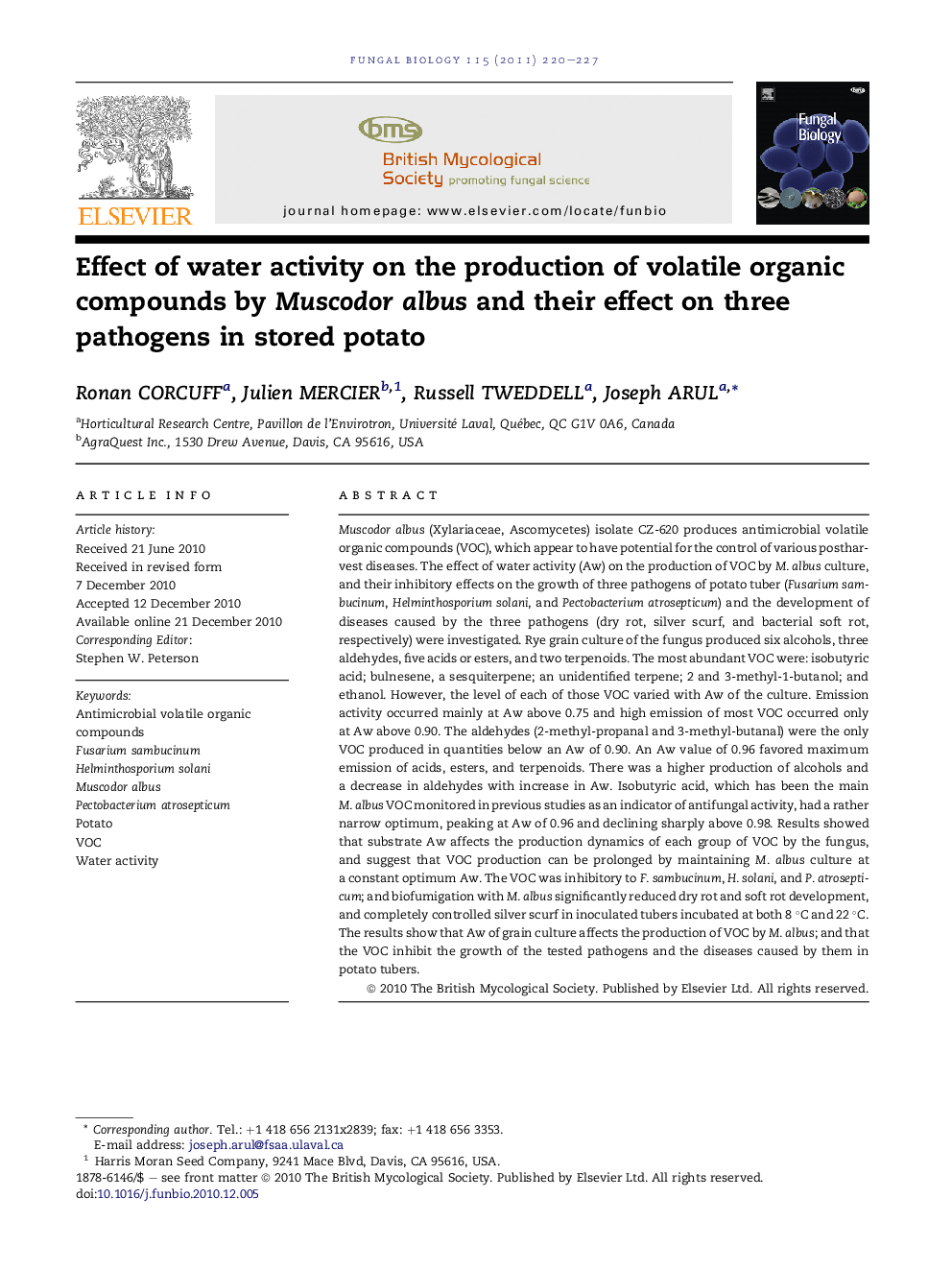| کد مقاله | کد نشریه | سال انتشار | مقاله انگلیسی | نسخه تمام متن |
|---|---|---|---|---|
| 4357418 | 1300058 | 2011 | 8 صفحه PDF | دانلود رایگان |

Muscodor albus (Xylariaceae, Ascomycetes) isolate CZ-620 produces antimicrobial volatile organic compounds (VOC), which appear to have potential for the control of various postharvest diseases. The effect of water activity (Aw) on the production of VOC by M. albus culture, and their inhibitory effects on the growth of three pathogens of potato tuber (Fusarium sambucinum, Helminthosporium solani, and Pectobacterium atrosepticum) and the development of diseases caused by the three pathogens (dry rot, silver scurf, and bacterial soft rot, respectively) were investigated. Rye grain culture of the fungus produced six alcohols, three aldehydes, five acids or esters, and two terpenoids. The most abundant VOC were: isobutyric acid; bulnesene, a sesquiterpene; an unidentified terpene; 2 and 3-methyl-1-butanol; and ethanol. However, the level of each of those VOC varied with Aw of the culture. Emission activity occurred mainly at Aw above 0.75 and high emission of most VOC occurred only at Aw above 0.90. The aldehydes (2-methyl-propanal and 3-methyl-butanal) were the only VOC produced in quantities below an Aw of 0.90. An Aw value of 0.96 favored maximum emission of acids, esters, and terpenoids. There was a higher production of alcohols and a decrease in aldehydes with increase in Aw. Isobutyric acid, which has been the main M. albus VOC monitored in previous studies as an indicator of antifungal activity, had a rather narrow optimum, peaking at Aw of 0.96 and declining sharply above 0.98. Results showed that substrate Aw affects the production dynamics of each group of VOC by the fungus, and suggest that VOC production can be prolonged by maintaining M. albus culture at a constant optimum Aw. The VOC was inhibitory to F. sambucinum, H. solani, and P. atrosepticum; and biofumigation with M. albus significantly reduced dry rot and soft rot development, and completely controlled silver scurf in inoculated tubers incubated at both 8 °C and 22 °C. The results show that Aw of grain culture affects the production of VOC by M. albus; and that the VOC inhibit the growth of the tested pathogens and the diseases caused by them in potato tubers.
Journal: Fungal Biology - Volume 115, Issue 3, March 2011, Pages 220–227